||
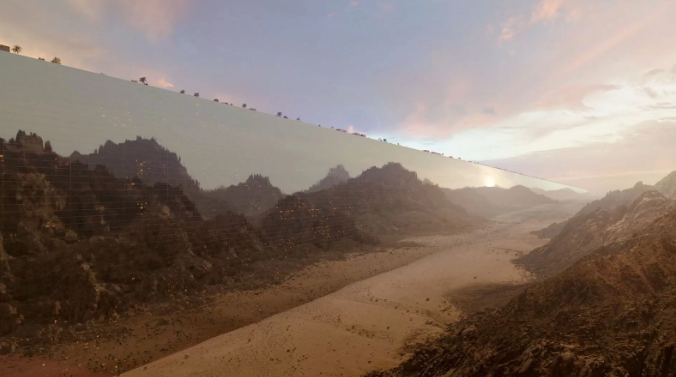
Counteracting current urban life – an alternate way of living. A unified area where you have access to any facility in question; a place that you never need to leave. Confined in metal walls yet seemingly free. Deemed the “civilizational revolution that puts humans first”, the newly founded NEOM Line project provides a unique take to the current state of human housing development. Stretching over 100 miles, the Line will serve as a home to over 9 million people. With a staggering investment of $500 billion, Saudi leaders and investors believe that this megacity will become the future of humanity. Irrespective of the ethics and practicality of the plan, is it really worth it? Will this hefty investment really pay off? Financially, how does the Line evaluate?
Where Is This Money From?
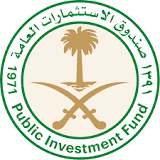
$500 billion is no measly amount; a lot of material trust has been placed into the belief of this project’s success. But who has this staggering amount of money and is sponsoring this behind the scenes? The label company NEOM is a company newly founded for the purpose of the Line, fully owned and operated by the Public Investment Fund of Saudi Arabia (PIF). The PIF is the main fund of public welfare and infrastructure in Saudi Arabia, receiving most of its funding from the Saudi Central Bank, investments from foreign companies (i.e. Tesla, Uber), and Saudi State Assets.
Although these contracts generate a large sum, the main source of the Saudi riches is a result of a historical trade that Saudi Arabia has occupied since its creation: oil. The oil trade is thoroughly operated and controlled by the ever-present grasp of the Saudi government. Crude exports of Saudi oil have reached an average of $1 billion a day, with revenue increasing 123% from 2021 to 2022. In just one quarter, the largest Saudi oil corporation Aramco profited $48.2 billion, $1 billion more than in the same time-frame as in 2021. The oil trade is helping Saudi Arabia be one of the fastest growing large economies in the world, meaning that this phenomenal growth and profits are likely to not fall in the near future as long as the oil production retains itself. Along with this oil money, the PIF generates funds from Saudi Arabia’s tourism in recent years.
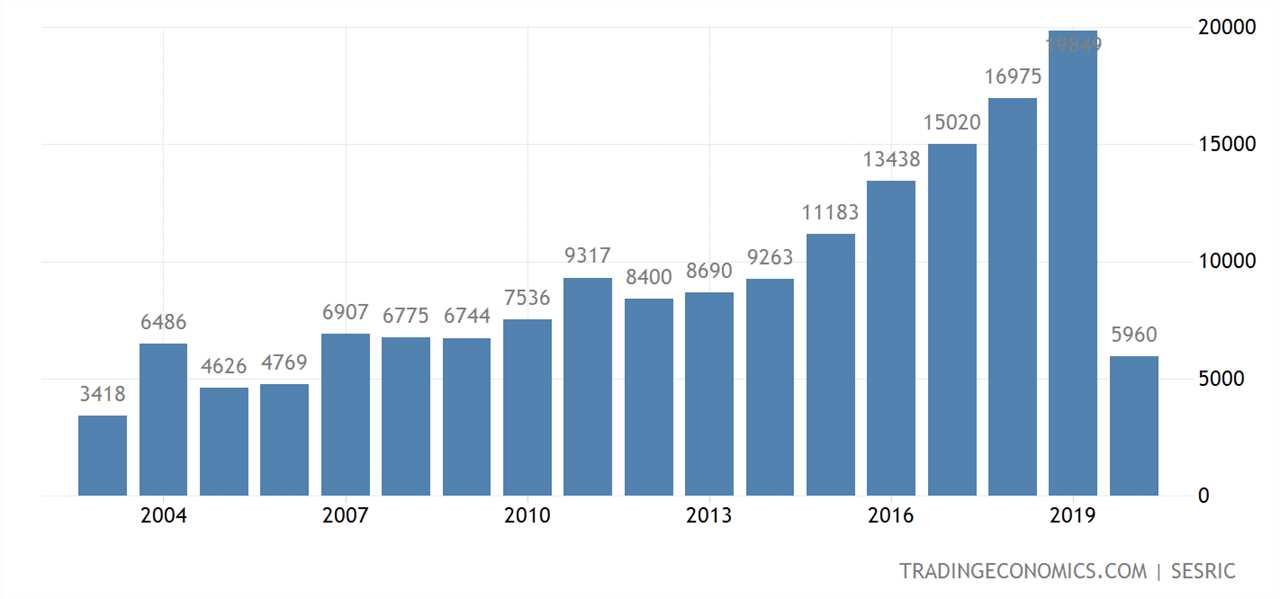
Demonstrated in the graph above, Saudi Arabia has experienced great increases of tourism revenue as the age of luxury has introduced itself in the early 2000s. Pre-pandemic, revenue had experienced significant growth and it is likely to recreate itself after the pandemic recedes. Reaching to around a peak of $20 billion of tourism revenue in 2020, tourism has provided another growing source of cash flow for the PIF. The tourism of the Saudi country is driven by its existing oasis cities. Travelers from across the world vacation here to experience the lavish lifestyles of these illustrious locations within the country. These cities are constructed upon money of the PIF, where as mentioned before, is a product of the oil trade. In short, the Line is effectively the output of the fabled Arabic petroleum trade.
What Is NEOM?
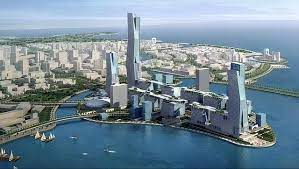
NEOM is the group that is executing this mega-project. In terms of their previous ventures, NEOM has already developed modern tourist settlements around the Red Sea to increase the tourist inflow of the Arabic area. They have already constructed a modern mega-city in the Tabuk Province of Northwestern Saudi Arabia. This megacity holds a similar premise to design and function as the Line, where tourists and citizens alike are sent to a tropical realm filled with everything you would need to live a happy life. This pattern emerges in not only NEOM’s megacity, but other oil-based countries in the Middle East.
A perfect example of this is Dubai, which has recently undergone a sudden and very impactful financial takeover. The nation now lives in the same vision as the other NEOM megacities where luxury comes first. “If you have money [you should] raise the bar,” the Crown Prince Mohammed bin Salman later claimed. The soon to be zero-carbon environment of the Line will have a greater connection to nature than any existing city today. If NEOM is successful in executing their vision, the Line could embody ideals of luxury and predictive lifestyle in their most ambitious project to date.
Potential Revenue: A Unique Situation
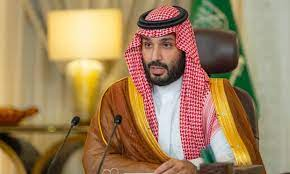
As mentioned before, the cost of the megacity is no small fee. Sponsors and investments from several third party sources have already amounted to hundreds of billions of dollars to fund the creation of this city. Having an expected cost of around $550 billion, it is crucial that the Line creates enough revenue from residents and other elements of the Line to recover part of this cost.
Residents of the Line are likely to have a somewhat costly lifestyle living in such a modern establishment. Deemed as “the best livable area – by far – in the whole planet” by Crown Prince Mohammed bin Salman, it is extremely likely that only the smallest margin of people will be able to live in this compound. Just 9 million people will be taken into units distributed across the Line. While this may be true, the main figures running the Line might not have the funds that the Saudi Arabian kingdom claims they have, meaning this rent price is even more integral to the success of the project.
Even though the famed oil trade of Saudi Arabia as well as the tourism the country experiences create an absurd sum yearly, the leaders of Saudi Arabia have taken several measures to create just enough cash to fund this project. The PIF is already in a significant fiscal deficit after the recent constructions of other mega cities and infrastructure within Saudi Arabia to amount to a debt of $79 billion in 2020. To combat this, the Saudi government enforced an increase on value added tax from 5% to 15% from 2018 to 2020.
Further complications during this time such as the COVID-19 pandemic have also influenced the state of the project’s development. In an interview recorded in The New Arab, Asif Shuja, a senior research fellow at the Middle East Institute at the National University of Singapore explained, “The finances coming from the PIF may also be affected by the oil-price volatility. Finally, Covid-19’s adverse impact on the project’s finances and schedule needs to be offset effectively, as this risk was not incorporated during the planning of this project.” As obstacles manipulate the timeline of the project, the Line needs to have significant sources of revenue in order to recover from complications and the substantial initial cost.
Conclusion

If successful, the Line will be the vision of NEOM that shows what a window of the future may look like. Confined spaces for large numbers of people to live and function comfortably may be the only solution to combating the Earth’s modern overpopulation. But how soon will we see this in other parts of the world, places other than the overly-rich countries of the Middle East? Simply put, the cost of producing a compound as great as the Line isn’t feasible. There are extremely few economies throughout the world that can handle such a large cost effectively. Although other countries might look towards the Line as a source of inspiration, there will very likely not be more lines, per se, throughout the world. The NEOM Line is a revolutionary take to modern housing systems and is the first of many visualizations of our future.
||
---------------------------
By: Sanjay Mukhyala
Title: The NEOM Line Project: A Financial Analysis
Sourced From: streetfins.com/the-neom-line-project-a-financial-analysis/
Published Date: Tue, 06 Sep 2022 03:51:59 +0000
Read More
Did you miss our previous article...
https://peaceofmindinvesting.com/clubs/economic-impacts-of-ukraines-refugee-crisis
.png) InvestingStocksToolsClubsVideosPrivacy PolicyTerms And Conditions
InvestingStocksToolsClubsVideosPrivacy PolicyTerms And Conditions
